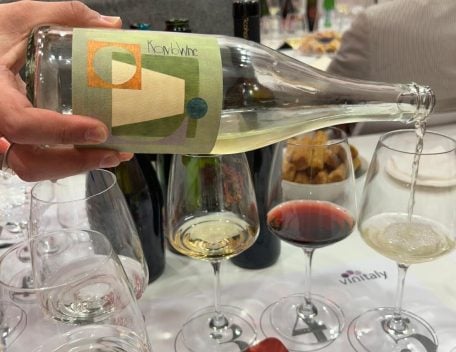The Gay-Odin chocolate shop is far from a rarity. With seven locations in Naples, one in Milan, and another in Rome’s Parioli district—opened in the 1980s—it quickly became a favourite. Once a gathering place for bejewelled ladies and diplomats, it now stands alone on its pavement alongside a furniture store, while the nearby Empire cinema—loved for its retractable roof that cleared cigarette smoke during intermissions—closed years ago, leaving only a bare façade. But for those wanting a taste of unique Neapolitan chocolate in Rome, Gay-Odin’s store at Via Stoppani 9 is the only place to go.
Founded in 1894, Gay-Odin opened its first location outside Naples in 1980. The Roman store offers all the classics from its flagship shop in Chiaia: unwrapped chocolates, pralines, bars, and wafer acorns filled with velvety gianduja. And then there’s the Foresta ("Forest") bark, in both milk and dark chocolate, which enchants everyone who tries it. Inside the chocolates, one might find rich cream, intoxicating liqueur, or crunchy brittle. Gay-Odin’s pralines, bars, and chocolates capture the unique flavours of Naples. The story began in the late 19th century, with roots tracing back further north to Piedmont, in the “cocoa valley.”
An arranged Marriage
In 1888, Isidoro Odin left Val Pellice, a region steeped in cocoa traditions, for Naples in search of fortune. Before departing for the southern capital, he wrote to Bartolomeo Gay, a renowned chocolatier and his father’s friend, asking for the hand of his second daughter—whom he had seen only once and admired. Bartolomeo instead offered the hand of his eldest daughter, Onorina Gay. She joined Isidoro in Naples, where they married in 1898. Onorina became not only his wife but also his close partner in sales.
The couple began selling Gay-Odin bonbons from a cart in the streets of central Naples: cocoa seeds dipped in molten chocolate and sprinkled with white sprinkles. In the early 20th century, they established their first small workshop on Via Chiaia. By 1920, now fully integrated into Neapolitan life, Isidoro made two pivotal decisions: he opened the first chocolate factory near Via dei Mille and created the iconic Foresta bark.
This exclusive Gay-Odin specialty starts with a thin layer of chocolate that is run through three rollers to form an ethereal sheet, which is then folded by hand to create a texture resembling tree bark. This unique delicacy is still handcrafted exclusively at the Naples factory. It was also in this period that Isidoro developed the technique of candying nuts, such as Avola almonds, before adding them to the chocolate mixture. Using hammered copper pans, the pralination process gave the final product a unique texture and flavour.
In 1922, Venetian architect Angelo Trevisan designed the iconic Gay-Odin headquarters on Via Vetriera, an architectural gem that foreshadowed the Liberty style for which Naples later became famous. The factory is now considered a national monument.
The Gentleman and Lady of Chocolate in Naples
It was thanks to Giuseppe Maglietta that Gay-Odin became one of the most beloved Neapolitan brands worldwide. Having inherited the factory from his uncles Nino and Giulio Castaldi—proprietors of Neapolitan institutions like Zi’ Teresa and the historic Gambrinus Bar at Piazza Plebiscito—Maglietta worked alongside Gay-Odin’s founder, Isidoro Odin, in the 1960s, learning all the secrets of artisanal chocolate-making.
When Maglietta took over the factory, he involved his wife and children, ushering in a golden era for the company and securing its legacy. However, in September 2024, the Gay-Odin universe mourned the loss of Marisa Del Vecchio, widow of the late Giuseppe Maglietta and the company’s historic CEO.
The Sheikh who loved the forest
A century after Gay-Odin’s founding in Naples, the brand received its most extravagant request—this time from Rome. The elite Parioli district, filled with notary offices and law firms, is also home to embassies.
According to the Roman shop staff, one morning, a trusted envoy of a Kuwaiti sheikh entered the store accompanied by a uniformed officer. The diplomat, a man of few words, pointed to a walnut wood box adorned with a reproduction of an 18th-century painting of the Gulf of Naples, priced at €100.
“I want 1,000 of these,” he declared.
Producing such a quantity was impossible for the small Roman shop. “Not my problem,” the envoy replied curtly. “I need them in three days.”
The man then spent over two hours selecting the chocolates to fill the boxes, sampling nearly everything in the shop as a long queue formed outside. Ultimately, he chose Foresta. The order was fulfilled, and the precious cargo left the Naples factory, was delivered to the embassy in Parioli, and finally departed for the Persian Gulf aboard a diplomatic jet.
The lengths people will go to for that delicate, crumbly chocolate bark…
Gay-Odin – Roma, via Stoppani 9 - Tel. +39 06 8069 3023 – Napoli, vico Vetriera 12 - Tel. +39 081 417843 – gay-odin.it




 A strong start for Italian wine exports in 2025. In January, the stockpiling effect in the US ahead of tariffs proves decisive
A strong start for Italian wine exports in 2025. In January, the stockpiling effect in the US ahead of tariffs proves decisive The leap in quality of the new Piwi wines across 15 labels
The leap in quality of the new Piwi wines across 15 labels Valpolicella welcomes back one of its most iconic wines: rebellious yet loyal, Grola returns to the DOC
Valpolicella welcomes back one of its most iconic wines: rebellious yet loyal, Grola returns to the DOC Versace opens a super hotel with an Italian restaurant. Here's what Donatella Hotel & Restaurant in Miami will be like
Versace opens a super hotel with an Italian restaurant. Here's what Donatella Hotel & Restaurant in Miami will be like At The Crown Tirana, service and quality at the highest levels
At The Crown Tirana, service and quality at the highest levels







